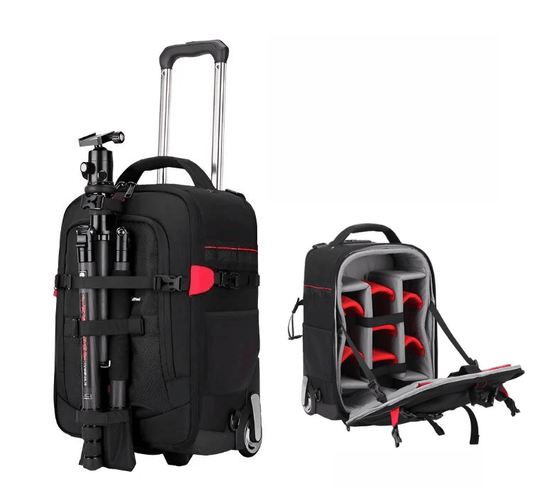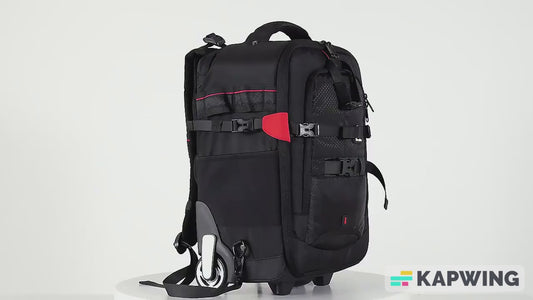Camping in Big Sur: A Comprehensive Guide to California's Coastal Paradise
Introduction
Imagine waking up to the soft rustle of ancient redwood trees, the distant roar of the Pacific Ocean crashing against rugged cliffs, and the crisp morning air filled with the scent of pine and sea salt. This is the allure of camping in Big Sur, a stretch of California's central coast that has captivated the hearts of nature lovers and adventure seekers for generations.
Big Sur has long been hailed as one of California's premier camping destinations, offering a unique blend of forest and coastal experiences that are hard to find elsewhere. However, as with many natural wonders, Big Sur's popularity has brought both opportunities and challenges. The region's unparalleled beauty draws millions of visitors each year, making it crucial for campers to plan carefully and practice responsible tourism to preserve this magnificent landscape for future generations.
Background and Context
The Evolution of Camping in Big Sur
Camping in Big Sur has a rich history dating back to the early 20th century when the area was first opened up by the construction of Highway 1. Initially, visitors were few, and camping was largely unrestricted. As word spread of Big Sur's breathtaking scenery, more people began to explore the region, leading to the establishment of formal campgrounds in the 1930s and 1940s.
Over the decades, Big Sur has transformed from a hidden gem to a world-renowned destination. The completion of Highway 1 in 1937 made the area more accessible, and the counterculture movement of the 1960s brought a new wave of visitors seeking spiritual connection with nature. Today, Big Sur faces the challenge of balancing its natural allure with the pressures of modern tourism.
Current Relevance: The Double-Edged Sword of Popularity
In recent years, Big Sur's popularity has skyrocketed, driven by social media exposure and its feature in popular culture, such as the TV series "Big Little Lies." According to recent statistics, visitor numbers have increased dramatically, from about 1.5 million in 1978 to an estimated 4 to 5 million during 2014 and 2015. This surge in tourism has brought economic benefits but also significant challenges.
The owner of the iconic Nepenthe restaurant reported a 40% increase in visitors since 2011, highlighting the rapid growth in tourism. While this influx has boosted the local economy, it has also strained the region's delicate ecosystems and limited infrastructure. The narrow, winding Highway 1 was never designed to handle such high traffic volumes, leading to congestion and safety concerns.
Big Sur's Natural Attractions
Redwood Forests: Giants of the Coast
Big Sur's redwood forests are among its most iconic features. These ancient trees, some over 1,000 years old, create a cathedral-like atmosphere with their towering presence. The redwood groves in Pfeiffer Big Sur State Park and Julia Pfeiffer Burns State Park offer cool, shaded retreats and host a diverse array of flora and fauna.
Coastal Cliffs and Beaches: Where Land Meets Sea
The dramatic coastline of Big Sur is characterized by sheer cliffs plunging into the Pacific Ocean, interspersed with hidden coves and beaches. McWay Falls in Julia Pfeiffer Burns State Park, where a waterfall cascades onto a pristine beach, is a must-see natural wonder. Pfeiffer Beach, with its purple sand and iconic Keyhole Rock, offers stunning sunset views and is a favorite among photographers.
Hiking Trails and Scenic Views
Big Sur boasts an extensive network of hiking trails catering to all skill levels. The Ewoldsen Trail in Julia Pfeiffer Burns State Park offers panoramic ocean views, while the Buzzard's Roost Trail in Pfeiffer Big Sur State Park takes hikers through diverse ecosystems, from redwood groves to chaparral-covered ridges. For those seeking a challenge, the Vicente Flat Trail in Los Padres National Forest provides a strenuous but rewarding backcountry experience.
Popular Campgrounds
Pfeiffer Big Sur State Park
Often referred to as the "crown jewel" of Big Sur camping, Pfeiffer Big Sur State Park offers 189 campsites nestled along the Big Sur River. The campground features hot showers, flush toilets, and a camp store, making it an excellent choice for families and first-time campers. Visitors can enjoy easy access to hiking trails, including the Pfeiffer Falls Trail, which leads to a beautiful 60-foot waterfall.
Julia Pfeiffer Burns State Park
While Julia Pfeiffer Burns State Park is renowned for its day-use areas and the iconic McWay Falls, it also offers two environmental campsites for those seeking a more secluded experience. These hike-in sites require advance reservations and offer stunning ocean views. However, they lack amenities and require campers to be self-sufficient.
Fernwood Resort
For those looking for a mix of camping and comfort, Fernwood Resort offers a range of options, from traditional tent sites to glamping in canvas tents and even motel rooms. The resort's location along the Big Sur River provides easy access to swimming holes and redwood groves. Amenities include hot showers, a general store, and a tavern, making it a popular choice for groups and families.
Camping Regulations and Restrictions
Designated Camping Areas
To protect Big Sur's fragile ecosystems and ensure public safety, camping is only permitted within designated private, state, or federal park campsites. This regulation is strictly enforced, and campers should be aware that camping along Highway 1 or in turnouts is illegal and subject to fines.
Fire Regulations
Given the high fire risk in the region, campfire regulations are strictly enforced. Campfires are only allowed in designated fire rings within established campgrounds. During periods of high fire danger, even these may be prohibited. Visitors should always check current fire restrictions before their trip and consider using portable propane stoves for cooking.
Leave No Trace Principles
All campers in Big Sur are expected to adhere to Leave No Trace principles. This includes packing out all trash, respecting wildlife, staying on designated trails, and minimizing campfire impacts. By following these guidelines, visitors help preserve Big Sur's natural beauty for future generations.
Impact of Tourism on Big Sur
Visitor Statistics: A Double-Edged Sword
The dramatic increase in visitors to Big Sur, from 1.5 million in 1978 to an estimated 4-5 million in 2014-2015, has brought both benefits and challenges to the region. While tourism has boosted the local economy, it has also put unprecedented pressure on the area's infrastructure and natural resources.
Environmental Concerns
The sheer number of visitors has raised serious environmental concerns. Increased foot traffic on trails has led to erosion and damage to sensitive plant species. Illegal camping and campfires have resulted in wildfires, posing a significant threat to the region's ecosystems and communities. Marine life along the coast has also been affected by increased pollution and disturbance.
Strain on Local Infrastructure
Big Sur's limited infrastructure was never designed to handle millions of visitors annually. The narrow Highway 1 often experiences severe congestion, especially during peak seasons. Parking areas are frequently overwhelmed, leading to dangerous roadside parking. Local services, including waste management and emergency response, are stretched thin trying to cope with the influx of tourists.
Sustainable Tourism Initiatives
Proposed Shuttle Services
To address traffic congestion and parking issues, there are proposals to implement shuttle services in Big Sur. These services would transport visitors to popular sites, reducing the number of private vehicles on the road and alleviating parking pressures at key attractions.
Parking Lot Closures
In an effort to manage visitor numbers and protect sensitive areas, there are plans to close certain parking lots, such as the one at Bixby Creek. While this may limit access to some popular spots, it's seen as a necessary step to prevent overcrowding and environmental damage.
Social Media Campaigns for Responsible Tourism
Innovative social media campaigns, like the Instagram account "BigSurHatesYou," are being used to promote responsible tourism practices. These initiatives aim to educate visitors about the importance of respecting local regulations, minimizing environmental impact, and preserving Big Sur's natural beauty.
Comparison with Other Camping Destinations
Yosemite National Park
Unlike Big Sur, Yosemite National Park is managed by a single federal entity and has more developed infrastructure to handle large numbers of visitors. With 5,400 parking spots and a free park-wide bus service, Yosemite offers a more structured camping experience. However, it faces similar challenges with overcrowding during peak seasons.
Lake Tahoe
Lake Tahoe provides a different camping experience with more urban amenities nearby. While it offers a mix of forest and water activities like Big Sur, it has a more developed infrastructure and is less prone to the extreme over-tourism issues seen in Big Sur. However, responsible camping practices are still crucial to preserve the lake's famous clear waters.
Joshua Tree National Park
Joshua Tree National Park has experienced similar issues with over-tourism and illegal camping. However, it has implemented more stringent regulations and enforcement compared to Big Sur. The desert environment of Joshua Tree presents unique challenges, such as extreme temperatures and limited water sources, which differ from the coastal conditions of Big Sur.
Controversies and Debates
Illegal Camping Along Highway 1
One of the most pressing issues in Big Sur is illegal camping along Highway 1. This practice not only poses significant health and safety risks but also causes environmental damage. Local residents and authorities are working to enforce laws against roadside camping, but the problem persists due to the area's popularity and limited campsite availability.
Over-Tourism Management
The debate on how to manage over-tourism in Big Sur is ongoing. While some advocate for stricter visitor limits and closures of popular sites, others argue for improved infrastructure to accommodate the growing number of tourists. Balancing access with preservation remains a challenge for local authorities and stakeholders.
Balancing Economic Benefits with Environmental Preservation
Big Sur's tourism industry is a significant economic driver for the region, but it comes at an environmental cost. The debate continues on how to strike a balance between supporting local businesses and protecting the natural environment that draws visitors in the first place. Sustainable tourism practices are seen as a potential solution, but their implementation and effectiveness are still being evaluated.
How To Plan Your Big Sur Camping Trip
Researching and Selecting the Right Campground
- Determine your camping style (tent, RV, glamping) and desired amenities.
- Research different campgrounds using resources like Hipcamp and official state park websites.
- Consider factors such as proximity to attractions, available facilities, and natural surroundings.
- Read reviews from other campers to get insights into the campground's atmosphere and management.
Making Reservations Well in Advance
- Book your campsite as early as possible, especially for popular campgrounds like Pfeiffer Big Sur State Park.
- Be prepared to make reservations up to six months in advance for peak season dates.
- Use the California State Parks reservation system or specific campground websites to secure your spot.
- Consider mid-week or off-season dates for better availability and a quieter experience.
Preparing for Diverse Weather Conditions
- Check long-term weather forecasts for your camping dates.
- Pack layers, including warm clothing for cool nights and rain gear for unexpected showers.
- Bring sun protection, including hats, sunscreen, and sunglasses, for sunny coastal days.
- Include a sturdy tent with a rainfly and a ground tarp for varying weather conditions.
Packing Essentials for a Big Sur Camping Trip
- Camping gear: tent, sleeping bags, sleeping pads, camping chairs, and tables.
- Cooking equipment: portable stove, fuel, cookware, utensils, and a cooler.
- Water containers and water purification methods (for backcountry camping).
- First aid kit and emergency supplies.
- Biodegradable soap and toiletries.
- Trash bags for packing out all waste.
- Flashlights or headlamps with extra batteries.
- Maps, compass, or GPS device for navigation.
- Camera to capture the stunning scenery.
Navigating Transportation Options to Reduce Traffic Impact
- Consider using shuttle services if available to popular attractions.
- Plan to arrive at your campground during off-peak hours to avoid traffic congestion.
- Use public transportation options where possible to reduce individual vehicle impact.
- Carpool with other campers if traveling in a group.
- Be prepared for potential road closures or delays on Highway 1 and have alternative routes planned.
FAQ Section
What wildlife might I encounter while camping in Big Sur?
Big Sur is home to a diverse array of wildlife, including black-tailed deer, raccoons, bobcats, and various bird species. Mountain lions are present but rarely seen. Along the coast, you might spot sea otters, harbor seals, and during migration seasons, gray whales. Always maintain a safe distance from wildlife and store food properly to avoid attracting animals to your campsite.
Are there any unique geological features I should look out for in Big Sur?
Big Sur is known for its dramatic coastal cliffs, formed by the collision of tectonic plates. Notable geological features include the Bixby Creek Bridge, a concrete arch bridge that spans a deep canyon, and the Keyhole Rock at Pfeiffer Beach, a natural arch formation in the ocean. The McWay Falls, an 80-foot waterfall that flows directly into the ocean, is another unique geological spectacle.
What are the best times of year to camp in Big Sur?
The best time to camp in Big Sur depends on your preferences. Late spring (April to May) and early fall (September to October) offer mild temperatures and less crowded conditions. Summer (June to August) is the most popular season but can be foggy along the coast. Winter (November to March) can be rainy but offers the chance to see migrating whales. Regardless of the season, always check weather forecasts and make reservations well in advance.
Are there any special permits required for backcountry camping in Big Sur?
Yes, backcountry camping in the Ventana Wilderness area of Los Padres National Forest requires a free wilderness permit. These can be obtained from the Monterey Ranger District office or self-issued at major trailheads. Additionally, during fire season, a free California Campfire Permit is required for the use of stoves, lanterns, or campfires in the backcountry.
How can I support local conservation efforts while camping in Big Sur?
There are several ways to support conservation in Big Sur: 1. Follow Leave No Trace principles to minimize your impact. 2. Donate to or volunteer with local organizations like the Ventana Wilderness Alliance or the Big Sur Land Trust. 3. Participate in beach clean-ups or trail maintenance days organized by state parks or local groups. 4. Support businesses that practice sustainable tourism. 5. Educate fellow campers about responsible practices and the importance of preserving Big Sur's natural beauty.
Challenges and Solutions
Challenge: Limited Campsite Availability
Solution: Plan and book your camping trip well in advance, sometimes up to six months ahead for popular sites. Consider visiting during off-peak seasons or mid-week for better availability. Explore less-known campgrounds in the surrounding areas as alternatives.
Challenge: Potential Fire Risks
Solution: Always check current fire regulations before your trip. Use designated fire rings in established campgrounds and consider portable propane stoves as a safer alternative. Keep a bucket of water nearby when having a campfire and ensure it's completely extinguished before leaving or sleeping.
Challenge: Overcrowding at Popular Sites
Solution: Visit popular attractions early in the morning or later in the evening to avoid peak crowds. Explore lesser-known trails and beaches recommended by local visitor centers. Consider camping in less popular areas of Big Sur or nearby regions to reduce pressure on overcrowded sites.
Ethical Considerations and Best Practices
Respecting Local Wildlife and Ecosystems
- Observe wildlife from a distance and never feed animals.
- Stay on designated trails to prevent erosion and protect plant life.
- Use biodegradable products and properly dispose of wastewater.
- Avoid picking flowers or removing any natural objects from the environment.
Supporting Local Businesses Responsibly
- Purchase supplies from local stores in Big Sur or nearby communities.
- Dine at local restaurants that source ingredients sustainably.
- Choose eco-friendly tour operators and activities.
- Buy locally made souvenirs to support the community's economy.
Minimizing Environmental Impact Through Proper Waste Management
- Pack out all trash, including food scraps and hygiene products.
- Use reusable containers and utensils to reduce single-use plastics.
- Properly dispose of human waste in designated facilities or by following backcountry guidelines.
- Participate in local clean-up efforts if available during your stay.
Success Stories and Testimonials
"We have camped at Pfeiffer Big Sur State Park a few times and it has been an amazing experience each time. We love the giant redwoods, the river, and the stunning sunsets. The campground is well-maintained, and the staff is always helpful. It's the perfect base for exploring all that Big Sur has to offer."
- Ordinary Traveler, Travel blogger
"As a local business owner, I've seen firsthand the impact of increased tourism on our community. While it's great for our economy, we need to find ways to manage the influx of visitors sustainably. We're working hard to educate our guests about responsible tourism practices and the importance of preserving Big Sur's natural beauty."
- Local restaurant owner, Big Sur
Tools, Equipment, and Resources
Recommended Camping Gear for Big Sur Conditions
- All-season tent with rainfly: Big Sur's weather can be unpredictable, so a sturdy, waterproof tent is essential.
- Sleeping bags rated for 30°F or lower: Nights can be chilly, even in summer.
- Sleeping pads or air mattresses: For comfort and insulation from the ground.
- Portable stove and fuel: Many campgrounds have fire restrictions, so a stove is a reliable cooking option.
- Bear-resistant food container: Required in some areas to protect your food and local wildlife.
- Layers of clothing: Include warm base layers, fleece, and a waterproof outer layer.
- Hiking boots: For exploring Big Sur's varied terrain.
- Headlamp or flashlight: Essential for navigating campsites after dark.
- First aid kit: Include basics plus any personal medications.
- Refillable water bottles and water treatment system: For staying hydrated on trails and in backcountry areas.
Useful Apps for Trail Navigation and Campsite Reservations
- AllTrails: Offers detailed trail maps and user reviews for Big Sur hiking trails.
- Hipcamp: Useful for finding and booking private campsites in the Big Sur area.
- ReserveCalifornia: The official app for reserving campsites in California State Parks.
- iNaturalist: Great for identifying local flora and fauna during your camping trip.
- Gaia GPS: Provides detailed topographic maps for backcountry navigation.
- Campendium: Offers reviews and information on campgrounds, including those in Big Sur.
- Weather Underground: For detailed local weather forecasts to help plan your trip.
Local Visitor Centers and Information Resources
-
Big Sur Station: Located at the entrance to Pfeiffer Big Sur State Park, offering maps, permits, and local information.
Address: 47555 CA-1, Big Sur, CA 93920
Phone: (831) 667-2315 -
Julia Pfeiffer Burns State Park Visitor Center: Provides information on local trails and park regulations.
Address: 52801 California State Route 1, Big Sur, CA 93920
Phone: (831) 667-2315 -
Monterey County Convention & Visitors Bureau: Offers comprehensive information on Big Sur and surrounding areas.
Website: https://www.seemonterey.com/regions/big-sur/ -
Big Sur Chamber of Commerce: Provides local business information and travel tips.
Website: https://www.bigsurcalifornia.org/ -
Los Padres National Forest - Monterey Ranger District: For information on backcountry camping and wilderness permits.
Address: 406 S. Mil dred Ave., King City, CA 93930
Phone: (831) 385-5434
Conclusion
Camping in Big Sur offers an unparalleled opportunity to immerse oneself in one of California's most stunning natural landscapes. From the towering redwoods to the dramatic coastal cliffs, Big Sur provides a diverse range of experiences for campers of all levels. However, with this beauty comes the responsibility to preserve and protect it for future generations.
As we've explored throughout this guide, the key to a successful and responsible camping trip in Big Sur lies in careful planning and a commitment to sustainable tourism practices. By booking campsites in advance, adhering to local regulations, and following Leave No Trace principles, visitors can enjoy all that Big Sur has to offer while minimizing their impact on this fragile ecosystem.
The challenges faced by Big Sur due to increasing visitor numbers highlight the delicate balance between accessibility and conservation. It's crucial for campers to be aware of their role in maintaining this balance. By choosing to camp in designated areas, supporting local businesses responsibly, and participating in conservation efforts, visitors can contribute positively to the region's sustainability.
Remember that camping in Big Sur is not just about finding a place to pitch a tent; it's about connecting with nature, respecting local communities, and becoming a steward of this remarkable landscape. Whether you're watching the sunset from Pfeiffer Beach, hiking through ancient redwood groves, or simply enjoying the tranquility of a campfire under the stars, each moment in Big Sur is an opportunity to create lasting memories while preserving its beauty for others to enjoy.
As you plan your camping adventure in Big Sur, keep in mind the importance of flexibility and respect for the environment. Be prepared for changing weather conditions, potential crowds at popular sites, and the need to adapt your plans if necessary. By approaching your trip with a spirit of adventure and a commitment to responsible tourism, you'll not only have a more enjoyable experience but also play a part in ensuring that Big Sur remains a pristine wilderness for years to come.
In the words of the famed writer Henry Miller, who once called Big Sur home, "The face of the earth as the Creator intended it to look." Let's work together to keep it that way, ensuring that future generations can continue to experience the awe-inspiring beauty of Big Sur's rugged coastlines, serene forests, and untamed wilderness.
Additional Resources
-
Official Big Sur Tourism Website: https://www.bigsurcalifornia.org/
This comprehensive resource offers up-to-date information on camping, hiking, local attractions, and current conditions in Big Sur. -
California State Parks Reservation System: https://www.reservecalifornia.com/
Use this official site to book campsites at state parks in Big Sur, including Pfeiffer Big Sur State Park and Julia Pfeiffer Burns State Park. -
Ventana Wilderness Alliance: https://www.ventanawild.org/
A local conservation organization offering volunteer opportunities, trail information, and resources for responsible backcountry use in the Big Sur area. -
Leave No Trace Center for Outdoor Ethics: https://lnt.org/
Learn more about the seven principles of Leave No Trace and how to apply them during your Big Sur camping trip. -
Big Sur Land Trust: https://www.bigsurlandtrust.org/
A non-profit organization working to conserve Big Sur's landscapes. Their website offers information on local conservation efforts and ways to get involved. -
Monterey County Free Libraries - Big Sur Branch: https://www.co.monterey.ca.us/government/departments-i-z/library/locations/big-sur-branch
A local resource for books, maps, and information about Big Sur's history and ecology. -
National Oceanic and Atmospheric Administration (NOAA) Marine Forecast: https://www.weather.gov/mtr/marine
Check this site for up-to-date marine forecasts, crucial for planning coastal activities in Big Sur. -
California Department of Fish and Wildlife - Central Coast Region: https://wildlife.ca.gov/Regions/4
Offers information on local wildlife, fishing regulations, and conservation efforts in the Big Sur area. -
Friends of the Elephant Seals: https://www.elephantseal.org/
Learn about the elephant seal colony at Piedras Blancas, just south of Big Sur, and plan a visit during your camping trip. -
Big Sur Trail Map by Franko Maps: https://frankosmaps.com/big-sur-trail-map
A detailed, waterproof map of Big Sur trails and campsites, available for purchase online or at local visitor centers.
These additional resources will help you plan a more informed and responsible camping trip to Big Sur, ensuring that you have all the necessary information to make the most of your visit while respecting the local environment and community.































































